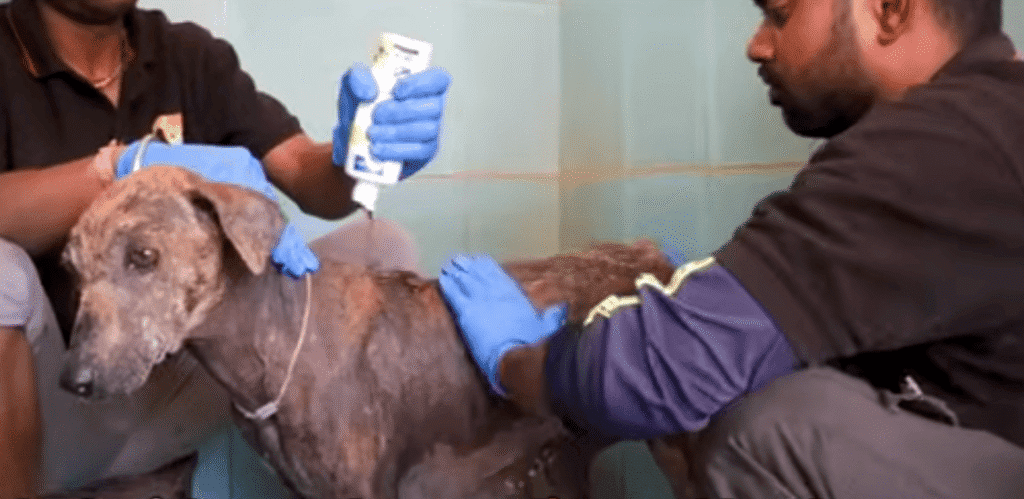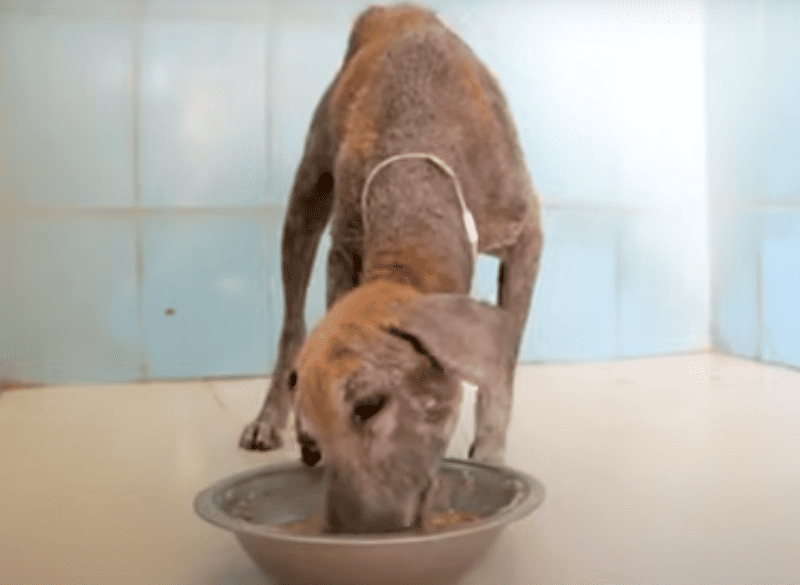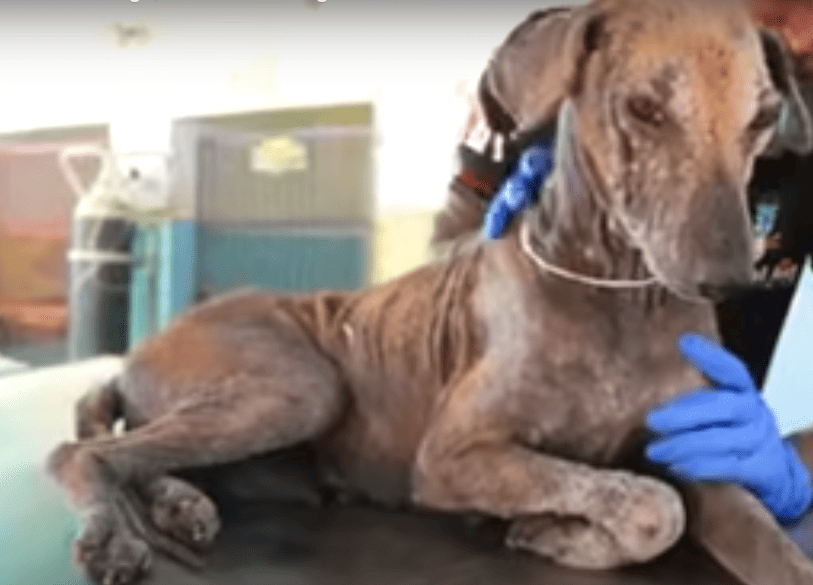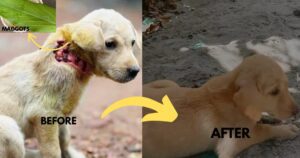What Is Mange?
Mange is a severe and painful disorder of the skin in dogs caused by the presence of small mites that burrow beneath their skin.
These little beauties are invisible parasites that drive dogs crazy by making them incredibly itchy, causing them to scratch constantly, lose hair, form scabs, and even open wounds.
It can also make dogs very sick if not treated. Their skin deteriorates, they can get infections, and their general health can suffer.
It Also changes the way a dog feels on the inside.
This is why dog owners must know what mange is, how it spreads, and how to treat it. With proper care, dogs can return to happy, itch-free lives.
How Mange Affects Dogs Beyond the Skin
Mange disrupts movement and comfort. Infected dogs rarely rest, constantly scratching or pacing as if battling an invisible torment.
This makes the dog burn calories quickly, eventually causing weight loss and muscle wasting.
Thin and weak dogs do not have good resistance to fighting infection.
Many symptoms can even worsen for some dogs, as their immune systems are so weakened that they cannot fight off the parasites.
Ava’s narrative demonstrates this perfectly. She was itching and so uncomfortable she couldn’t sleep.
She continued to move, burning more calories than she was taking in. It left her emaciated and exhausted.
Common Symptoms You Should Watch
The itch and scratch are universal symptoms. Other signs include:
- Patchy loss of hair (small or large areas)
- Red and inflamed skin
- Thickened, scaly, or crusty skin
- Scratching that leads to sores and open wounds
- An odor from the skin
Scratching can lead to skin infections when left untreated. These infections are more painful and may also require antibiotics.
What Causes Mange in Dogs?
Mange is due to mites – small, microscopic parasites living on or beneath a dog’s skin and hair follicles. There are two main types:
- Sarcoptic (scabies) – extremely itchy and contagious
- Demodectic typically only occurs in puppies or dogs with compromised immune systems
Dr. Church said the mites are tiny and can’t be seen without a microscope. They are transmitted easily from dog to dog by close contact or shared bedding.
It is more common in dogs with poor hygiene, weakened immune systems, or those living in close quarters with others.
How Is Mange Diagnosed?
If you suspect mange, the first stop should be the vet. The vet will carefully inspect the dog’s skin.
Generally, diagnosis consists of taking skin scrapings to view mites under a microscope. This helps the vet determine the kind of mange the patient has.
Occasionally, the vet will perform a skin biopsy or other tests if the case is complex.
How to Treat Mange: The Basics

The good news is that mange is treatable. It’s time-consuming and requires care, but most dogs recover entirely.
Treatment usually involves:
- Medicated baths or dips to kill the mites
- Oral medication or injections to destroy mites from within the body
- Antibiotics for secondary infections
- Special shampoos to soothe inflamed skin
The dog requires a series of treatments over weeks or even months. The medicine must be administered until all mites are eradicated.
Early Treatment vs. Severe
If your dog is diagnosed with mange early, treatment will be easier and faster. In many cases, dogs can be treated at home with assistance from their owners.
But in severe cases, including Ava’s, treatment becomes more complex. The dog might be very weak, thin, and in pain.
An animal with severe mange may require hospitalization or a calm, controlled environment where it can rest and be treated.
The dog requires more than medicine: it needs time to recover in peaceful surroundings.
Why Hospitalization Helps in Severe Mange Cases
Treating severe mange in unstable or unsanitary conditions is dangerous. You may lose your dog to running away or hiding, preventing completion of treatment.
Additionally, affected dogs need somewhere quiet to rest. Itching caused by constant movement stops once the mites are eliminated. Rest is key to faster recovery.
In Ava’s situation, hospitalization was pivotal. It allowed her to gain weight, rebuild muscle, and heal her skin.
Ava’s Recovery: A Story of Hope

Ava was discovered in horrifically poor health. She was thin, irritable, and covered in scabs from scratching.
After the first medicated bath and meds, Ava started to relax. That’s when the itching began to subside, and her skin began to heal.
On food and concomitants, Ava soon began to gain weight and recover. The soft new fur began to regrow.
It was incredible for the team to see Ava return like she did—from a scared little dog to a happy, healthy dog.
The Role of Nutrition in Mange Recovery
The food given is vital during the treatment of mange. Dogs with mange lose a lot of calories from their nonstop itching and restlessness.
The key to getting dogs back up to a proper weight is not feeding grains because they finally think the animal is thin enough and have realized they are fed up.
It also helps them and builds their immune system to resist parasites.
Inadequate nutrition can interfere with healing. That’s the reason rescue teams feed dogs like Ava exceptional food.
Rest and Comfort Are Healing Aids
Mange is painful. Dogs get restless and stressed out from constant itching.
The body needs rest to heal wounds and regrow new skin”. It reduces stress and boosts your immune system.
Dogs treated on the streets or in loud, unsafe locations may also not sleep. That slows their recovery.
So, a calm, peaceful place with gentle care is essential. (In Ava’s case, recovery came from medicine and quiet rest.
How You Can Help Dogs With Mange
Most dogs with mange are strays or throwaways. They suffer without care.
Donations and the support of good folks fund search teams. Your contributions go toward medicated baths, medication, food, and shelter.
And your support of rescue efforts equals life, happiness, and health for many dogs.
How to Prevent Mange in Your Dog
An ounce of prevention is worth a pound of cure. Mange is prevented with little effort:
- Regular baths and grooming
- Do not get close to infected animals.
- Prevent wetness and humidity in your dog’s living area.
- A veterinarian with regular checkups, especially if your dog scratches frequently
If you see any signs of mange, visit your vet right away. The earlier you seek treatment, the more you can help save your dog from pain and complications.
What to Do If Your Dog Has Mange
Here’s what to do if your dog is scratching too much or losing hair:
- Take them to your vet now.
- Follow the vet’s treatment plan exactly.
- Keep your dog in a calm and clean environment. Finish the whole course of medicine and baths.
Do not discontinue treatment early, even if your dog appears to be better. Mange mites can burrow and relapse if they aren’t treated fully.
The Emotional Side of Mange Treatment
Mange is more than skin deep! It impacts a dog’s attitude and disposition.
Dogs affected by mange might be itchy, frightened, or uninterested. They can become distrustful of humans.
With a gentle touch, patience, and love, these dogs respond emotionally. Ava had recovered physically and emotionally; she’d found her self-confidence and happiness.
Conclusion:
Mange is a severe condition, but it is entirely treatable. Dogs can get well with early detection, the right medicine , rest, and nutrition.
Ava’s narrative is a demonstration of what kindness and care can offer. From health misery, every dog has the right to life.
Thank you for supporting the rescue groups and the mange-sick dogs. Together, we can all make the life these animals deserve a reality.
If you like, I can amplify the story and help you convert it into a social media piece. Just say the word!



